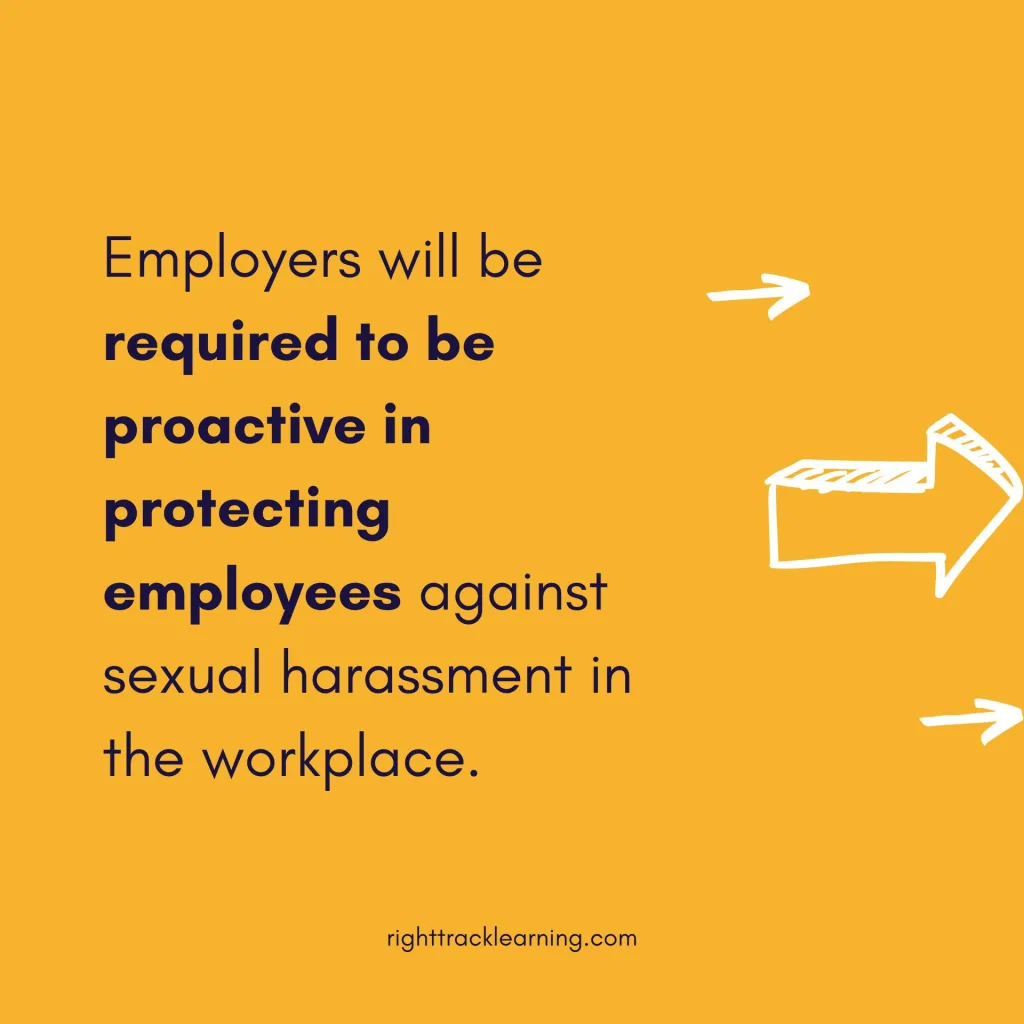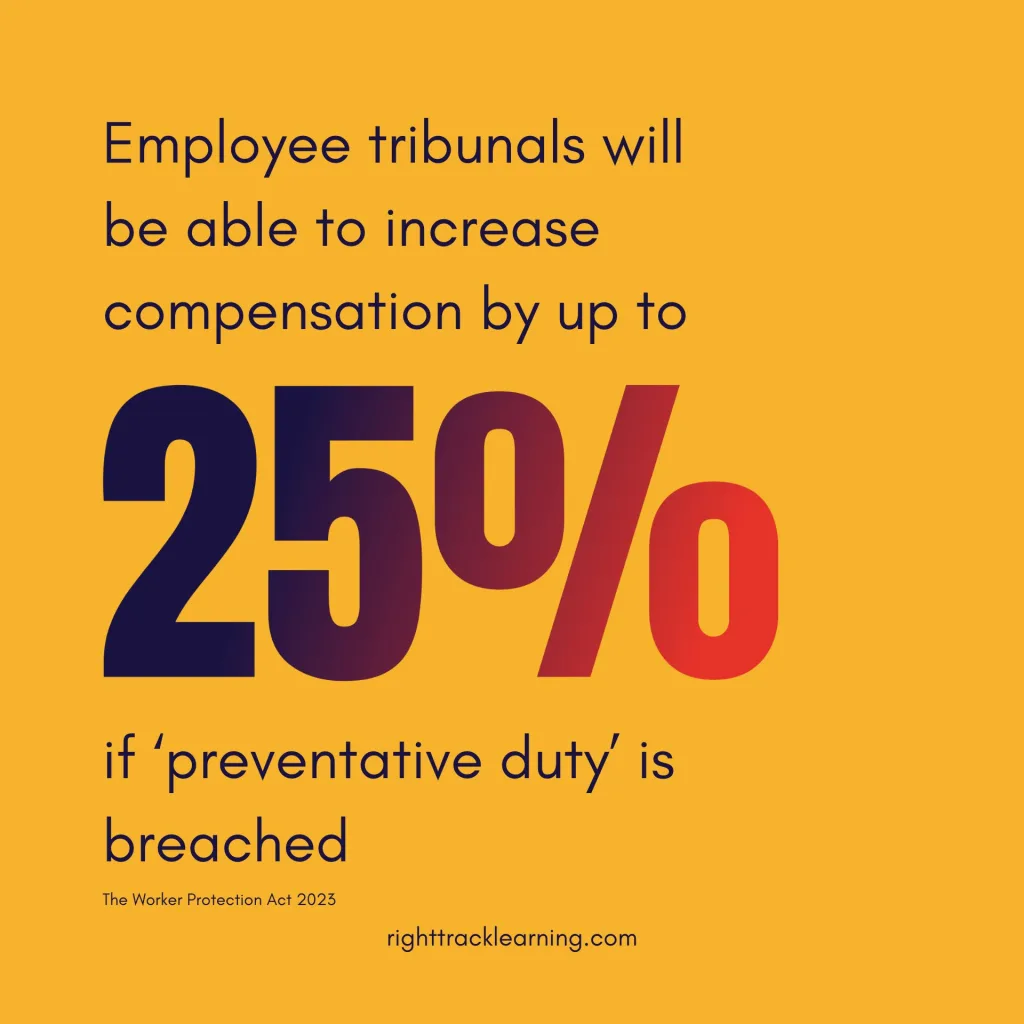In 2020, 29% of people stated that they had experienced sexual harassment in the workplace within the last 12 months, with unwelcome jokes and unwelcome staring the most common forms. The issue of sexual harassment in the workplace is alarming, and has now been recognised that steps need to be taken to prevent this.


What exactly is the Worker Protection Act?
The Worker Protection Act (UK only) is an update to the existing Equality Act 2010, which focuses on preventative duty: ‘a legal duty on employers to take reasonable steps to prevent sexual harassment of their workers’.
As of 26 October 2024, it is deemed unlawful if an organisation (of any size) fails to take reasonable steps to prevent sexual harassment in the workplace. Essentially, it means that employers need to be proactive in protecting employees against sexual harassment in the workplace; not only by an employer’s own workers, but also preventing sexual harassment to employees from third parties such as suppliers, partners and customers.
If a sexual harassment claim is awarded compensation, an employment tribunal will decide if the employer has taken reasonable steps to prevent sexual harassment (preventative duty). If this duty has been breached, an employment tribunal will be able to increase compensation by up to 25%.
The EHRC (Equality and Human Rights Commission) updated its existing guidance on this new duty, making it clear that employers now cannot wait until a sexual harassment incident takes place to act, but instead refer back to incidents that have happened and analyse how action can be taken to stop it happening again, and to foresee situations where employees may be subject to it and to put steps in place to prevent it.


What might reasonable steps look like?
Employers should take reasonable steps such as:
- Introducing, or reviewing and updating an existing anti-harassment policy
- Ensuring that the policy is communicated with employees, as well as the unacceptable behaviours
- Creating and clearly communicating reporting procedures, ensuring that the process is confidential
- Conducting risk assessments
- Providing all employees with Preventing Sexual Harassment Training which educates delegates about respecting individual boundaries, understanding what is classed as sexual misconduct, the impact of sexual harassment on the individual, teams, culture and organisation and how people can speak out against misconduct
- Encouraging a culture where people feel comfortable to speak out and that incidents will be acted upon
- Gaining feedback from employees to identify any steps which need to be taken to prevent sexual harassment
- Monitoring and reporting on the reasonable steps such as auditing policies regularly
What does sexual misconduct look like?
Did you know that:
- 32% of women say their careers have been affected by sexual harassment (Randstad).
- 45% of women have experienced sexual harassment at work (STUC 2022).
- 85% of women said that their report and experience was not taken seriously and dealt with appropriately (STUC 2022).
- 63% of those who experienced sexual harassment in the workplace reported the perpetrator was a man and 22% reported it was a woman (2020 Sexual Harassment Survey)
- 61% of respondents have experienced sexual harassment in public and on their way to work (STUC 2022).
Aside from it now being a compliance requirement, it’s about employers creating a safe and respectful environment for all employees.
Sexual harassment in the workplace can cover a variety of unwanted behaviours and it is essential for all employees to be aware of these:
- Off-the-cuff, inappropriate comments which may be disguised as ‘banter’
- Suggestive looks
- Sharing sexually graphic images
- Unwelcome touching
- Persistent date or sexual advances
Sexual Harassment Training Solution
In response to the Workers Protection Act, our team of specialists have re-designed our Preventing Sexual Harassment training solution to define boundaries and expectations, start conversations and create a culture of speaking out (and listening).
Providing a safe and supportive environment for delegates, the session (which can be taken as a recommended half-day workshop or a webinar, supported by bitesize learning videos and toolkits) will explore the impact of sexual misconduct, understand that banter and general boundaries are different for everyone, and explore real-life examples with professional actors and the impact behaviour can have on individuals and organisations.